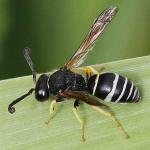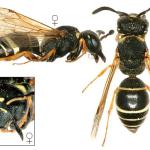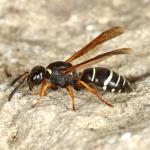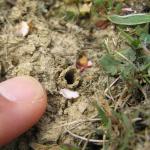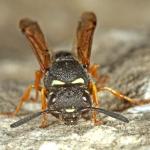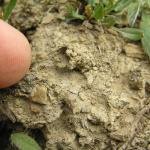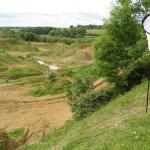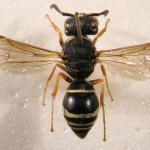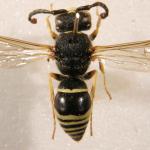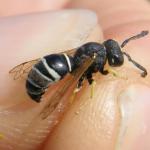The species has been recorded from Devon to Kent and northwards to Northamptonshire.
Listed in Falk (1991) as Nationally Notable (Na).
Open situations on light clayey soils. Grasslands, heathlands, soft rock cliffs, landslips and saltmarsh margins. Also disturbed situations such as brick pits, sand pits and railway embankments.
Adults are most likely to be seen during June but have also been seen in late May and July and more rarely in early August.
The cells of O. melanocephalus have been observed to be provisioned with weevil larvae and small lepidopterous caterpillars.
The nesting areas of O. melanocephalus are usually on level, exposed soil with a clay content. The burrow entrance has an associated 'chimney' which is rather short, being about 1cm long. See Odynerus spinipes for further details of nesting biology.
Wild carrot, clover and speedwell.
1997


